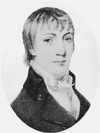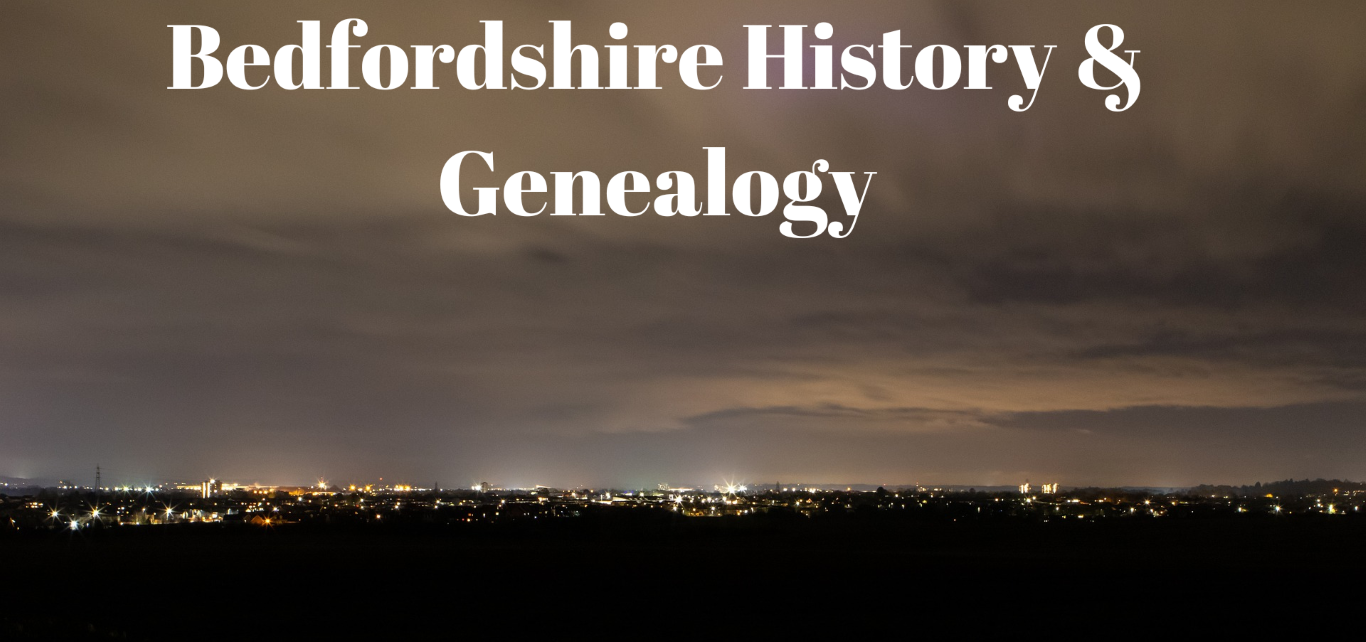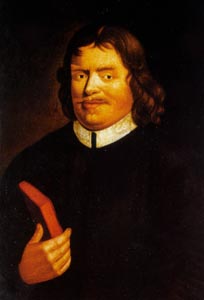Famous People of Bedfordshire
|
John Bunyan (1628-88)
|
John Howard
|
|
|
His statue stands in the area near St. Paul's church, Bedford, was a nonconformist who lived in the 18th century, and who denounced the dreadful conditions which existed then in prisons. The Howard League for Penal Reform is named after him. (More about John Howard) |
|
Charles Wells
|
|
| Was a sea-captain in the 1860s who, in order to win the girl he loved, abandoned the sea and started his now famous brewery. Four generations later the firm still remains with the family. (More about Charles Wells) | |
|
Admiral John Byng
|
|
| Born at Southill in 1704 and buried in the church there, was shot for failing to relieve the French blockade of Minorca during the Seven Years' War with France. | |
|
Samuel Whitbread (1st) (1720-1796)
|
Samuel Whitbread (2nd) (1758-1815)
|
| Samuel Whitbread senior was born at Cardington. He was the founder of the Whitbread brewing company. His wealth eventually allowed him to buy Lord Torrington's Southill Estate. (More about Samuel Whitbread 1st) | The notebooks kept by Samuel Whitbread 2nd of Southill are a rare survival, recording in detail the cases he handled in his capacity as a Justice - or Magistrate - for the County. The pages of this slim volume convey a lively picture of social and economic conditions in the closing stages of the Napoleonic wars. (More about Samuel Whitbread 2nd) [Further reading SAMUEL WHITBREAD'S NOTEBOOKS 1810-11, edited by Alan F.Cirket, Vol.50 (1971)] |
|
Commander Frank Wild (1874-1939)
|
|
| The polar explorer and author of Shackleton's Last Voyage was educated in Bedford. | |
|
Sir William Harpur and
Dame Alice Harpur |
Trevor Huddlestone
(1913-88) |
| Lived in the 17th century, and Sir William became Lord Mayor of London. In 1566, he created the original endowment to establish a boys' school in the town of Bedford. Bedford High School for girls was opened in 1882 and there are now four Harpur Trust Schools.Harpur's munificence places the development of education in Bedford outside the mainstream of national educational history. (More about William Harpur) [Further reading ELEMENTARY EDUCATION IN BEDFORD 1868-1903 and BEDFORDSHIRE ECCLESIASTICAL CENSUS 1851, by D.W.Bushby, Vol.54 (1975) - ISBN 0 85155 036 3] | Bedford-born Anglican priest, in South Africa from 1943 to 1956, who also served as president of the British Anti-Apartheid Movement. In October 1987 he convened the Harare Conference, which brought together a range of resistence groups from South Africa and thus had a direct bearing on the continuing struggle against apartheid. (More about Trevor Huddlestone) |
|
Thomas Tompion
|
|
| Son of an Ickwell blacksmith, who was born at Northill in 1639, went on to become a Master Clock and Watchmaker. | |
|
Worthington George Smith
|
Sir William Morgan
|
| A former resident and First Freeman of Dunstable, antiquary and eccentric was the author of Dunstable, its History and Surroundings and his masterpiece Man, the Primeval Savage?. | Son of a Wilstead farmer, was originally a grocer's assistant who emigrated to Australia, made his fortune at the gold diggings there and became Premier of South Australia from 1878 to 1881. |
|
Robert Bloomfield
|
Daniel Albone (1860-1906)
|
 The pastoral poet of Suffolk, born December 3, 1766, Honington, Suffolk, who worked as a shoemaker, in London, and spent his last 12 years of life in Shefford. He achieved brief fame with poems describing the English countryside. His first poem, The Farmer's Boy (1800), written after he had left the land to become a London shoemaker, owed its popularity to its blend of late 18th-century pastoralism with an early Romantic feeling for nature. The works that followed, from Rural Tales, Ballads, and Songs (1802) to The Banks of Wye (1811), were almost equally successful. He died August 9, 1823, in Shefford. 'Let his wild woodnotes tell the rest' is carved on his gravestone, which is cared for by the pupils in the school in Shefford that bears his name. The pastoral poet of Suffolk, born December 3, 1766, Honington, Suffolk, who worked as a shoemaker, in London, and spent his last 12 years of life in Shefford. He achieved brief fame with poems describing the English countryside. His first poem, The Farmer's Boy (1800), written after he had left the land to become a London shoemaker, owed its popularity to its blend of late 18th-century pastoralism with an early Romantic feeling for nature. The works that followed, from Rural Tales, Ballads, and Songs (1802) to The Banks of Wye (1811), were almost equally successful. He died August 9, 1823, in Shefford. 'Let his wild woodnotes tell the rest' is carved on his gravestone, which is cared for by the pupils in the school in Shefford that bears his name. |
Lived his life in Biggleswade, and is known as the racing cyclist who in the 1880's established the Ivel Cycle Works - named after the River Ivel - where he invented his own bicycles, motorcycles, ladies bicycles (he is particularly famous as the inventor of the first ladies safety bicycle), the tandem and the first Ivel Agricultural Tractor (1902) - the ancestor of all modern tractors. The Ivel tractor changed agriculture at a stroke. Before the Ivel's invention, farming relied on heavy traction engines and horses but suddenly these were made largely redundant. The Ivel could do more work, was stronger, more reliable and quicker. It was a remarkable invention and today's tractors are not that different, such was the greatness of his design. One of his prototype machines is preserved in the Science Museum, London. |
|
Sir Joseph Paxton
|
Henry John Sylvester Stannard
|
| Son of a poor farmer from Milton Bryan, went on to be the Bedfordshire-born architect of Crystal Palace. | Born in Bedfordshire 1870. He was a painter with the Norwich Sxchool of Painting as were two of his relatives, Alfred and Joseph Stannard. |
|
Lady Margaret Beaufort
|
George Gascoine
|
| Born at Bletsoe Castle in 1443. She married Edward Tudor and became mother to Henry VII. | A poet, of Cardington Manor, was commissioned in the royal army of Elizabeth I as a war correspondent. His report was entitled The Spoyle of Antwerp. |
|
Ernest Edgar Blake (1879-1961)
|
Nicholas Rowe (1673-1718)
|
| Born in Bedford, was a pioneer of motion pictures. | Born at Little Barford in comfortable circumstances, in due course, he was called to the bar, but soon abandoned law in order to devote himself wholly to literature. An ardent Whig, he was able to gain various government posts during the course of his life. His first play, The Ambitious Stepmother, was produced, in 1700, at Lincoln's Inn fields by Betterton, and was well received. It is one of the large group of plays in which the scene is laid in conventionally "eastern" surroundings. This was followed by Tamerlane (1701-2), established his reputation as a popular playwright. Soon afterward he wrote his best plays, The Fair Penitent (1703) and Jane Shore (1714); both are stories of men's cruelty to women that prefigure the domestic tragedies popular later in the 18th century. Rowe is also well known for his edition of Shakespeare (1709), that supplied valuable textual and biographical data and divided the plays into acts and scenes. His life was devoted to being dramatic writer, and from 1715-18 he was poet-laureat to George I.; he was buried with much pomp in Westminster abbey in 1718. |
|
Henry Ryland (1856-1924)
|
|
| Son of a Biggleswade draper gained famed as a Pre-Raphaelite painter. | |
|
The Bassett Family
|
|
| A family of Quaker bankers who did much to bring prosperity to Leighton Buzzard in the 19th century. They laid out Church Square in 1855 and had The Terrace diseigned by architect W C Read. | |
|
The Howard Brothers
|
|
| Created the Britannia Iron Works in Bedford in 1857 as a model factory. | |
|
Captain William Peel
|
|
| Of Sandy received the Victoria Cross in 1857 for his exploits in the Crimean War. | |
|
Arthur Hailey
|
|
| Internationally-known writer of American blockbusters, was born and educated in Luton. | |
|
Polhill Family
|
Herbert Wilcox
|
| The History of the Polhill family includes stories of Arthur Twistleton and his brother Cecil Henry, who were famous for being members of the Cambridge Seven. (More about The POLHILL Family) | The famous British film producer was educated at Bedford School. He married the equally famous British actress Anna Neagle. |
|
George Joye
|
Glenn Miller
|
| Born circa 1480, clergyman born in Renhold, lived in Blunham. In 1525 and 1526, William Tyndale completed an English translation of the 1519 and 1522 editions of the Erasmus Greek New Testament. Tyndale continued to work on translations of the Old Testament, working from the Hebrew and Latin text and Luther's German translation, but died before he could complete it.In Tyndale's time, George Joye also translated portions of the Bible into English. In 1534, he published a revision of Tyndale's New Testament - with changes of which Tyndale did not approve. Joye also published translations of Isaiah, Jeremiah, Lamentations, Proverbs and Ecclesiastes. (More about George Joye) | Gelnn Miller was not born in Bedford, he was the leader of the American Band of the Allied Expeditionary Forces. He and his band were was based in Bedford during the second world war. Many of his broadcasts were made in Bedford. His aircraft was lost on a flight from Bedfordshire in 1944. A bronze bust commemorating his achievements can be found on the facade of the Bedford Corn Exchange. Glen Miller concerts remain a regular feature within Bedford's calendar. |

